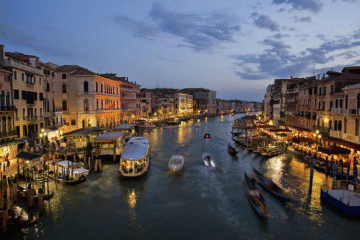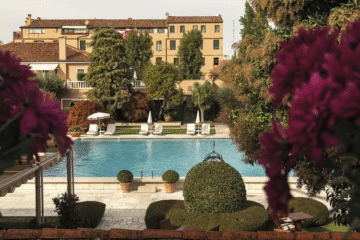Travelers love Rome’s many piazzas, archaeological sites, the Colosseum and Pantheon, cathedrals, the Vatican Museums, Sistine Chapel, Spanish Steps, and Trevi Fountain. Rome also offers designer shopping, luxurious hotels, upscale restaurants, expansive markets selling produce, seafood, and meats, and casual trattorias where local dishes like Cacio e Pepe are served. Rome’s distinct neighborhoods include Trastevere, Palatine Hill, Villa Borghese, Appian Way, and the Jewish Quarter.
Break away from the tourist track with these true Roman experiences.

Top 5 Can’t Miss
- Look beyond the Colosseum to learn more about the Roman Empire at fascinating, less-trafficked archaeological sites.
- Sip an espresso, or an iced iteration, at a classic Italian coffee bar.
- See the world’s oldest art collection—and an incredible view of the Roman Forum—at the Capitoline Museums.
- Save room for all of Rome’s classic pasta dishes—not just carbonara.
- Enjoy a picnic alongside ancient aqueducts in an under-the-radar city park.
With over 900 churches, incredible museums, and fantastic food, there is so much to do in the Eternal City. Of course, the famous archaeological sites are a must, especially for first-time visitors, but Rome is far from stuck in the past. To fully experience the city, carve out time to spot street art, try the hottest pizzerias, and sip an aperitivo at a rooftop bar with an incredible view.
Having lived in Rome for nearly five years and visited many times before that, I’ve tried to take advantage of every chance I can get to explore under-the-radar neighborhoods, see the iconic and lesser-known sights, and eat my way across the city. But don’t just take it from me—I’ve also tapped in-the-know locals behind two of Rome’s best tour companies for their recommendations. Read on for the 20 best things to do in Rome.
Visit archaeological sites beyond the Colosseum.
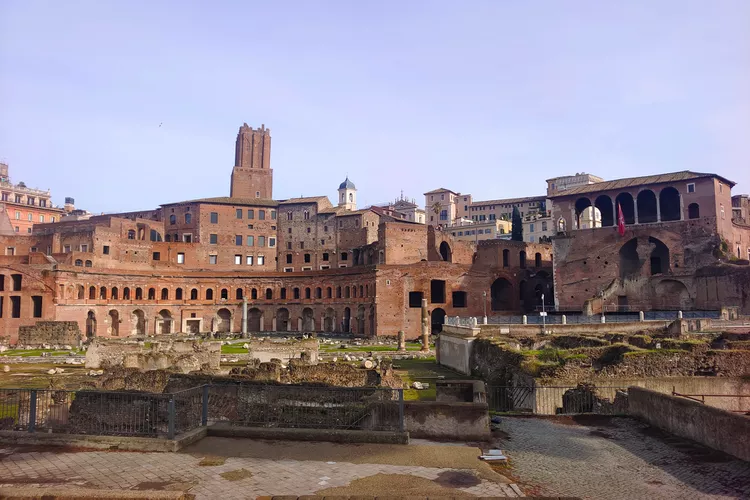
As an archaeologist and CEO of the luxury tour company Roma Experience, Elisa Valeria Bove knows all the best archaeological sites in and around Rome. Her personal favorite is the Quintili’s Villa, which is found along the ancient Roman road known as the Appia Antica. “Once called the ‘road of fire,’ for me it is the road of wonders,” she says, calling it “the most romantic and imposing archaeological site of Rome.”
About nine miles outside the center of Rome, these sites draw only a tiny fraction of the number of people that crowd the Colosseum, so visiting them is a much more relaxed experience. If your interest is piqued, there are even more ruins to see on a day trip to Pompeii or Tivoli.
Embrace the coffee culture.

“Every Italian has their neighborhood bar, and Retrobottega is mine,” says Annie Ojile, who runs the Vespa tour company Scooteroma and has been living in Rome for more than 15 years. “I like to have a cold coffee, especially in the summer months, so I’ve fallen in love with espresso tonic, which is espresso on ice with tonic water. It’s fabulous and refreshing.”
For an old-school Italian coffee bar, Bove recommends La Tazza d’Oro near the Pantheon, which opened in 1944 and still roasts its own beans. “In the summer you can have an amazing coffee granita with whipped cream—exactly what’s needed during a tour,” she says.
See artistic treasures at the Capitoline Museums.
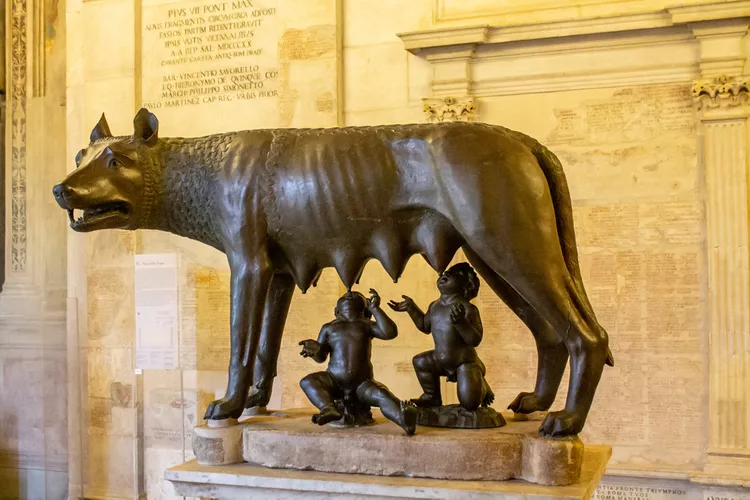
While the Vatican Museums may be more famous, the Capitoline Museums atop the Capitoline Hill are actually the oldest public collection of art in the world. “Crossing each room, you have a clear idea of the grandiosity of the Roman civilization, from the monarchy, passing through the republic and imperial eras,” says Bove, calling it “the evolution of Rome in one museum—a trip within a trip.” The site also offers incredible panoramic views of the Roman Forum.
Try the quartet of classic Roman pastas.
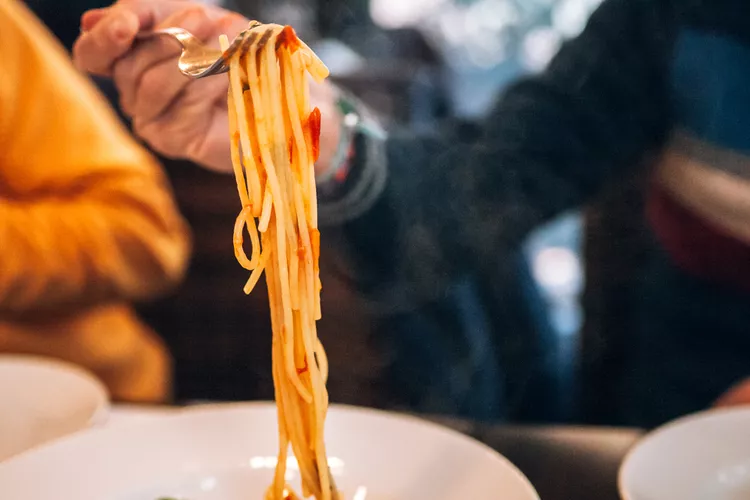
The most classic Roman pastas are essentially variations of the same recipe. Cacio e pepe is made with just pecorino and pepper. Add guanciale (pork cheek) and you’ve got la gricia. Add an egg to la gricia and you’ve got carbonara. Substitute tomato sauce for the egg, and you’ll get amatriciana. Try them all at locally loved restaurants like Da Enzo al 29, Checco Er Carettiere, or Salumeria Roscioli and decide which one is your favorite.
Picnic in the shadow of ancient aqueducts.
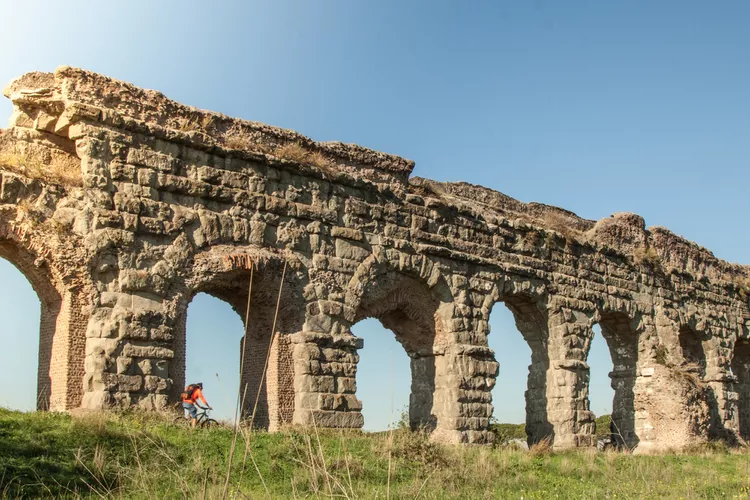
On sunny days—especially weekends and public holidays—locals love to pack a picnic or pop into a deli to grab a sandwich and head out to one of the city’s green, leafy parks. While the most famous and centrally located park is the Villa Borghese, the Parco degli Acquedotti is a local favorite—and you can reach it on the metro in about 40 minutes. “A stroll here is stepping into the past, a perfect place for a picnic, to run or cycle,” says Bove. “The owners of this spot are the aqueducts: six of the 11 of the ancient city of Rome can be admired in this charming location.”
Shop for local souvenirs.
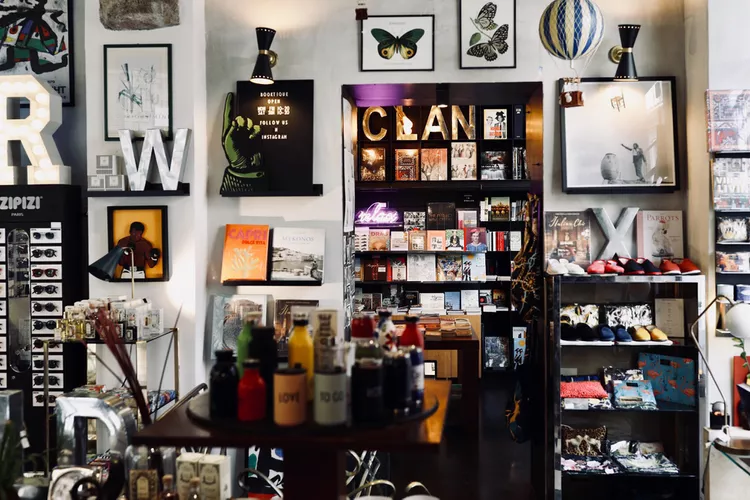
Skip the ubiquitous shops selling cheap souvenirs made elsewhere and support small local businesses instead, like independent bookstores. “What I love about Booktique is that the owners’ history is with books and museum shops and they have a way to present all their treasures in a very interesting, cheeky, chic way,” says Ojile. “I buy every single gift there, and I’m not exaggerating at all. I also buy myself many gifts there—candles, hand soap, art for my house, canvas bags.”
Booktique has two locations near the Pantheon and Piazza Navona. Other unique-to-Rome shops include the small handmade jewelry store Art Privé and Essenzialmente Laura for perfume.
Find all the Caravaggios in Rome.
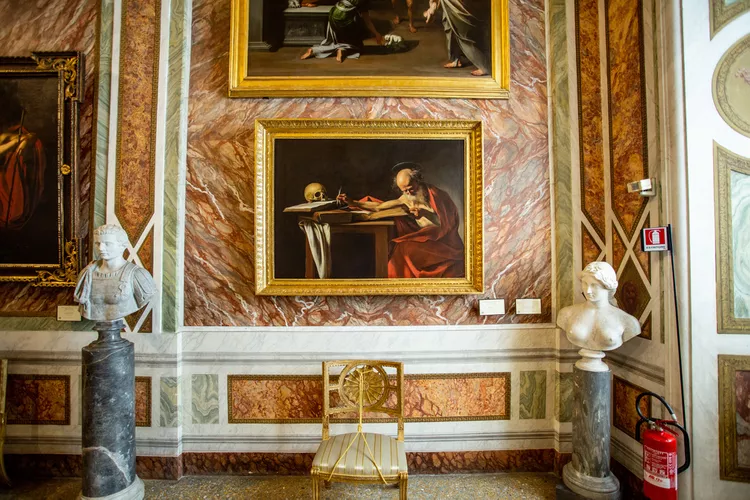
Michelangelo Merisi (better known as Caravaggio) was one of the masters of Baroque painting. He was particularly known for using a technique called chiaroscuro, which is essentially the dramatic contrast between light and dark. There are about 25 of his works in Rome, many of which can be seen in museums such as Galleria Borghese, Palazzo Barberini, and the aforementioned Capitoline Museums, as well as churches like Chiesa di San Luigi dei Francesi, Basilica di Santa Maria del Popolo, and Basilica di Sant’Agostino. You could go on a treasure hunt looking for them all.
Stroll down Via Margutta, the artists’ street.
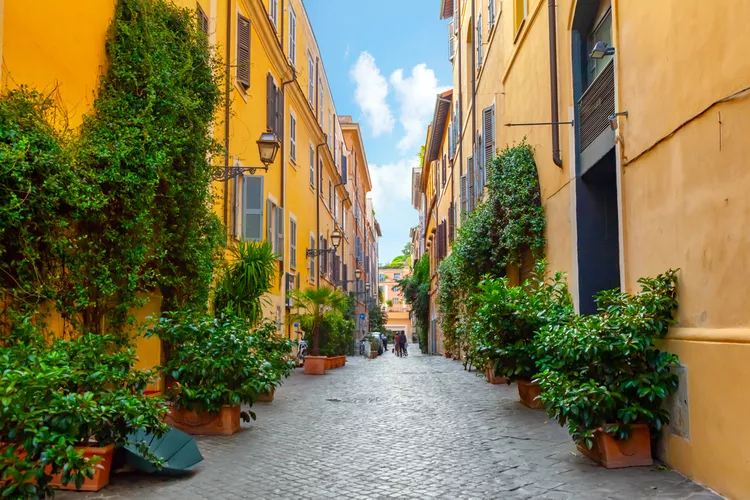
Tucked away between the Spanish Steps and Piazza del Popolo, the charming, cobblestoned Via Margutta is known as the artists’ street. Its history as a creative hub dates back to the Middle Ages, and it was once home to Picasso. Bove calls it, “A peaceful place in the heart of Rome, just a few minutes from the crowded Spanish Steps, to get lost in the magnificent art galleries and discover the painters of Via Margutta.”
In addition to galleries, Via Margutta has some fascinating links to cinematic history. Famed filmmaker Federico Fellini lived here (there’s a plaque on his building) and part of “Roman Holiday” starring Audrey Hepburn and Gregory Peck was filmed in the same apartment complex where Picasso lived. For a unique souvenir, stop by La Bottega del Marmoraro, where artisan Sandro Fiorentino still carves marble plaques by hand—many with witty phrases.
Visit a winery on the outskirts of the city.
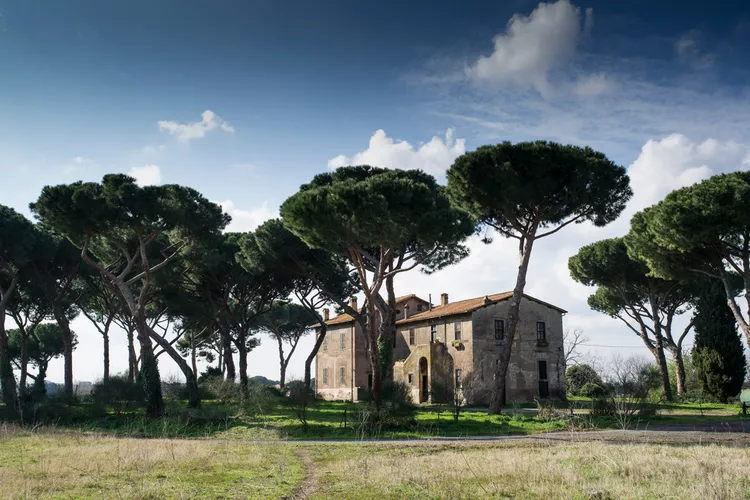
edges of Rome. Bove’s favorite, Tenuta di Fiorano, is owned by Prince Alessandrojacopo Boncompagni Ludovisi. “It doesn’t happen every day that a prince welcomes you in his estate like an old friend,” she remarks. “I always admired the will he has to respect the history of his family and the territory where he decided to plant his vineyard, creating one of the excellences of Italy.”
Try unusual gelato flavors.
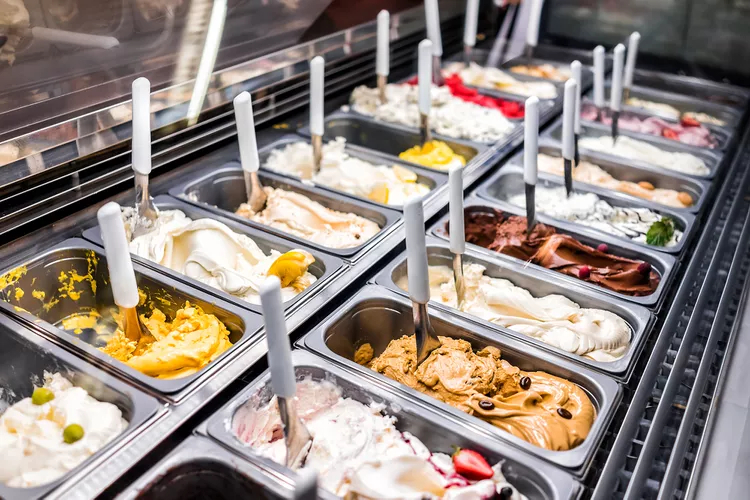
There are plenty of excellent gelaterias all over the city, but if you want to taste truly unique flavors, Torcè is a must-visit. In addition to the award-winning Majani chocolate gelato, savory scoops include gorgonzola, carbonara, and cacio e pepe. “They have these unusual flavors like black sesame. I tried their tomato gelato, which is excellent with mozzarella,” says Bove. ‘Torcè has done phenomenal things.”
Go street art hunting.
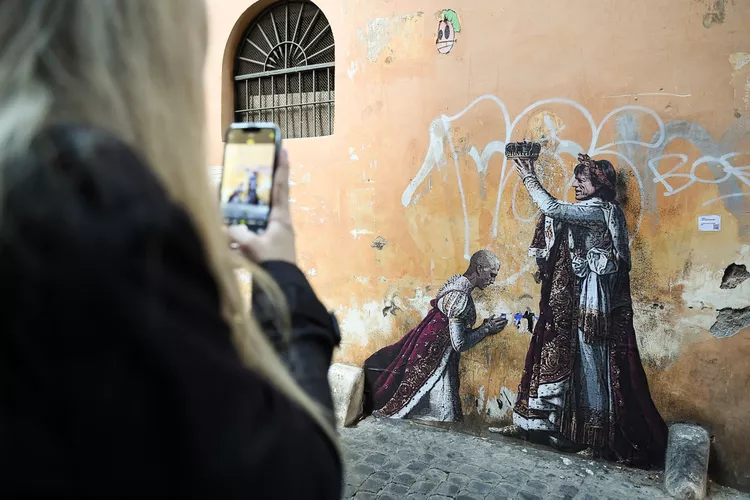
“Street art has an expiration date—you never know how long the piece is going to last—so it’s always fun to go find new pieces,” says Ojile. “I just love gliding over the cobblestones on my cherry red wheels and making random stops when I find new or revisit old pieces of street art.” Ojile recommends exploring neighborhoods like Testaccio, Ostiense, and Garbatella, where there’s a proliferation of murals and paste art. You can also see some cool street art in San Lorenzo and Pigneto, which are two of the city’s most up-and-coming neighborhoods.
See an ancient monument and modern art at the Ara Pacis.
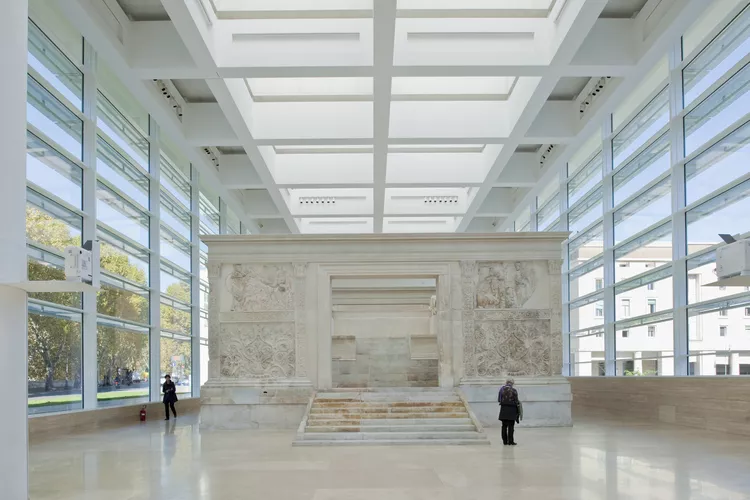
This sleek white building was designed by Richard Meier to house the ancient Altar of Peace built for Emperor Augustus. “The year after I moved to Rome, they started building the Ara Pacis and I will always remember that there was this big scandal because it was the first new piece of architecture to be built in the historic center since Mussolini’s era,” Ojile recalls.
Upstairs, you can see the ancient altar, while the lower level shows rotating exhibitions dedicated to modern art, design, cinema, or photography. “Now I live five minutes from it and they have really stellar photography shows and exhibitions and I absolutely love it. I go to every show,” Ojile says.
Peek inside aristocratic palaces.
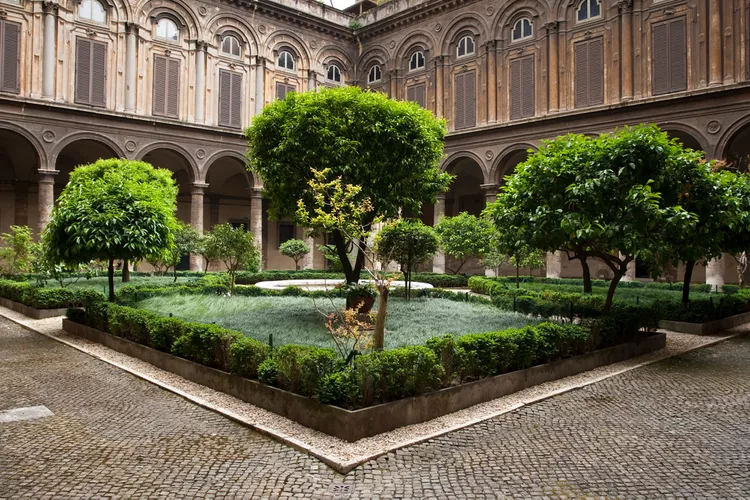
Want a glimpse of how Roman nobility lived? A handful of aristocratic palaces have been opened up as museums, allowing visitors to see their incredible art collections and opulent decor. Palazzo Colonna, which was a filming location for “Roman Holiday,” is open on Friday and Saturday mornings. Palazzo Doria Pamphilj, meanwhile, has a gorgeous hall of mirrors similar to the one at Versailles. Villa Farnesina in Trastevere contains breathtaking frescoes by Raphael.
Have an aperitivo at a rooftop bar.
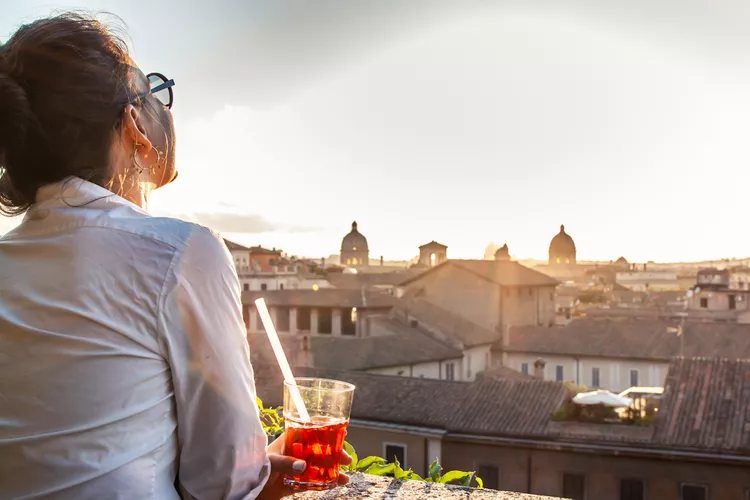
At the end of the day, there are few experiences as magical as sipping a drink while watching the sunset over the city’s terracotta rooftops. Luckily Rome has plenty of rooftop bars to choose from. Bove’s pick is Otivm Roof Bar overlooking the Capitoline Hill, while Ojile raves about Terrazza Flores, the seasonal rooftop bar of El Porteño, a chic Argentinian restaurant. “This is where you’ll find me this summer soaking in the gorgeous views and sipping on my Porteño cocktail,” she says.
Try one of the city’s new wave of pizzerias.
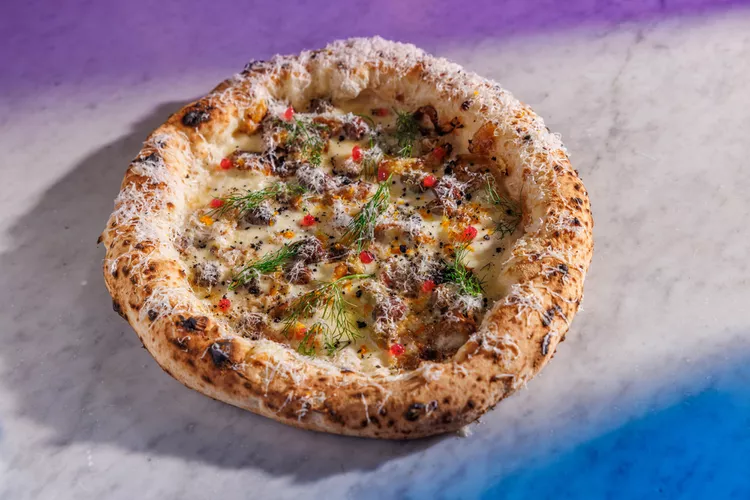
Pizza will never go out of style, and lately, there are more and more pizzerias upping the ante with creative offerings and top-notch quality. Rome has nine pizzerias ranked among the best in Italy by the judges at Top 50 Pizza. Among the top are Seu Pizza Illuminati in Trastevere, which serves gourmet Neapolitan-style pizza by Pier Daniele Seu, 180 Grammi in the up-and-coming neighborhood of Centocelle, where pizzaiolo Jacopo Mercuro makes thin-crust Roman pizza with all kinds of creative toppings, and Sbanco, where the dough is somewhere in between Neapolitan and Roman style and the fritti (fried appetizers) are divine.
Sip cutting-edge cocktails at Drink Kong.
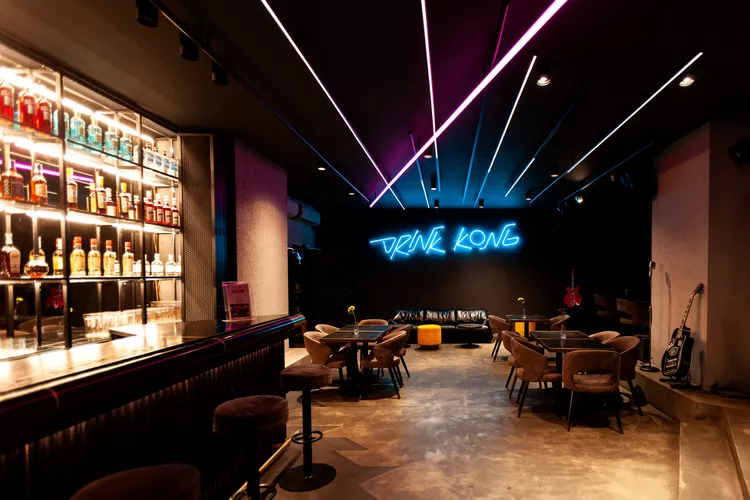
For Ojile, a perfect night out starts with dinner in Monti at a restaurant like Rocco or La Taverna dei Fori Imperiali and ends at Drink Kong, which is ranked as one of The World’s 50 Best Bars. “It’s like an 80s dreamland with amazing cocktails,” she notes. The aesthetic is inspired by Japanese film noir and the wildly creative drinks are dreamt up by Irish-Italian bartender Patrick Pistolesi, who has been a fixture on the city’s nightlife scene for decades.
Book a stay at a luxury hotel.
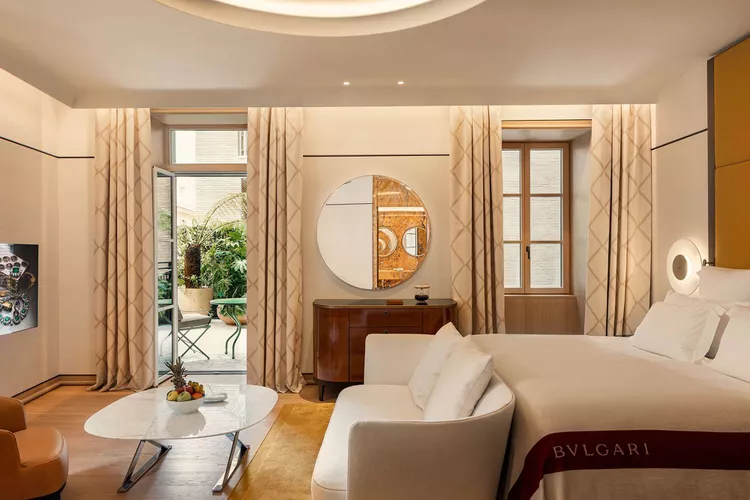
Rome is having a hospitality renaissance, with one luxe five-star hotel opening after the next. Take the Six Senses Rome, a sleek, modern hotel that puts wellness- and sustainability-minded travelers a five-minute walk from the Trevi fountain, or the Bulgari Hotel Rome in Piazza Augusto, known for its gorgeous design and restaurant by Michelin-starred chef Niko Romito. The Rome Edition occupies a Rationalist building near Via Veneto and has a restaurant by the team behind cult-favorite spot Pianostrada. Meanwhile, Anantara Palazzo Naiadi in Piazza della Repubblica has a cool rooftop restaurant and a gourmet restaurant on the ground floor.
Immerse yourself in Italian film history at Cinecittà.
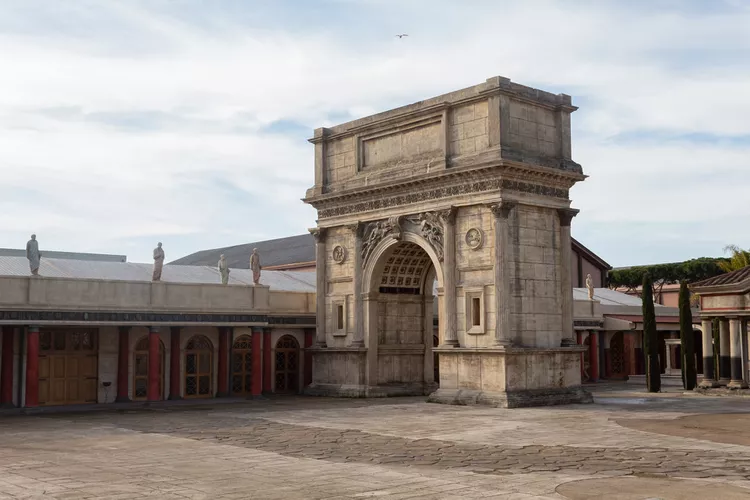
Rome was once known as “Hollywood on the Tiber” because so many movies were made here. While some were filmed on location, many were shot at Cinecittà, which is still an active filming studio. Part of it is open to visitors, including several exhibitions dedicated to film history (there’s one all about Fellini). You can visit the exhibitions on your own or sign up for a guided tour to learn more about the studio’s past and see the set of HBO’s Rome.
Sample wine at an enoteca.
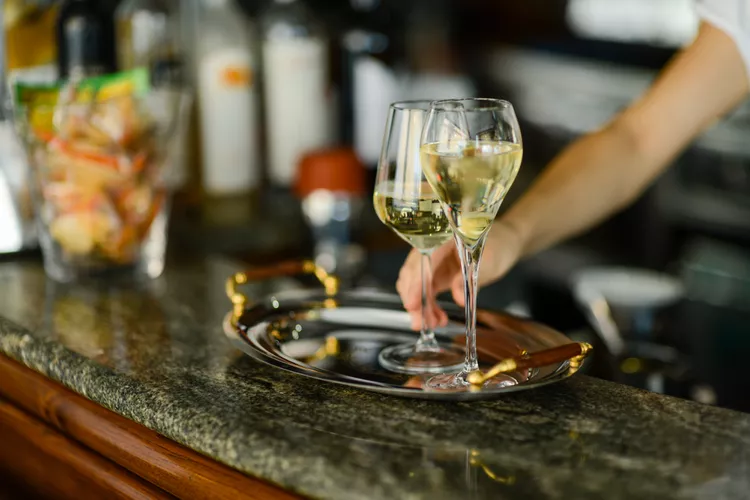
An enoteca is essentially just a wine bar, but they can range from simple and spartan to classy, elegant affairs. They usually have a wide selection of bottles and often a good variety of wines by the glass. Some just offer small bites like meat and cheese boards, while others have full menus. For the best enoteca in Rome, Bove recommends Achilli al Parlamento, saying they have “an incredible selection of wine labels at cost price. If you are a lover of great wines, you can’t skip this place.”

